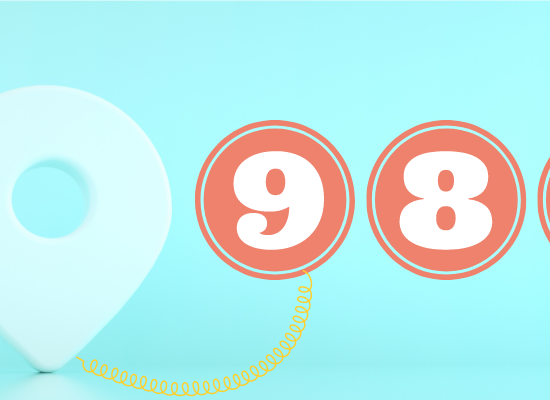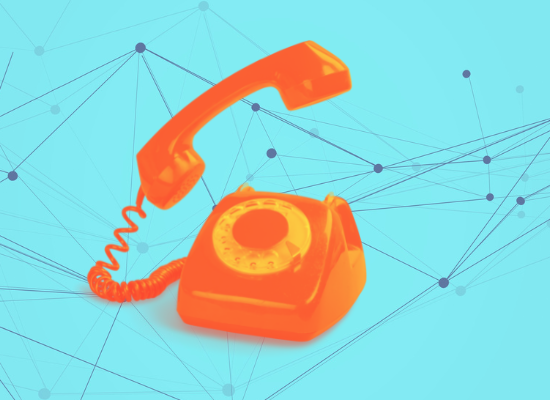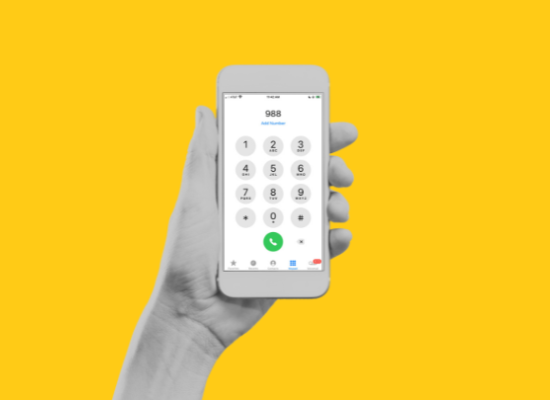
Stephanie Hepburn is a writer in New Orleans. She is the editor in chief of #CrisisTalk. You can reach her at .
In March 2020, Cooper Yacks, an eighth-grader at The County School in Maryland, was excited for his first day of online school. He went to all of his classes, but by bedtime, he hadn’t finished his homework. “I decided, ‘I’ll do it tomorrow morning,’” he says. The following day, he slept through his alarm. He calls what happened next “the forever cycle of procrastination.”
The middle school years are when kids develop their individuality and their identity among their peers. It’s often an awkward and challenging time marked by rapid body changes and social conformity. For kids experiencing middle school during the Covid pandemic—well, that’s a whole new level of difficulty, says Emily Moser, MEd, MPA, director of YouthLine Programs at Lines for Life in Oregon. YouthLine provides peer-to-peer support nationwide to young people through phone, text, chat, and email. Callers are ages 11 to 20.
“The preteen and middle school years are a time of exploration and branching out in a socially sensitive way,” says Moser. “They’re asking, ‘Who am I?’ ‘Who are my friends?’ Who are my people?’”
The ages of kids reaching out to the YouthLine have dropped in recent years, even before the pandemic. “While the average caller age remains 17,” says Moser, “the growth of callers ages 11 to 14 are rapidly rising.” This has been especially true during the pandemic. Between 2019 and 2020, outreach from this age group increased by 41%, spiking from 2,235 to 5,360 callers.
Last year, middle schoolers made up nearly 20% of all young people contacting the line.
The growth, notes Moser, is partly because a 13-year-old middle schooler shared information on the YouthLine in a TikTok post. “Contacts from this demographic spiked for two months,” she says. September and October 2020 alone accounted for roughly one-third of adolescents 11 to 14 who reached out to the YouthLine last year.
“That speaks to the importance of raising awareness,” says Moser, “and that if middle schoolers know about us, they’ll contact us.”
Adolescents primarily contact the peer-to-peer line to discuss relationship issues—family or friends, mental health concerns, suicide, self-harm, academic stressors, and loneliness and isolation. That’s remained steadfast throughout the Covid disaster; however, there’ve been shifts in the percentages of caller concerns.
During the pandemic, callers 11 to 14 have increasingly reported mental health concerns or isolation and loneliness. Fewer than usual have contacted the line about bullying or friend issues.
Halfway through May, Yacks realized he was in danger of failing his classes. Online school wasn’t as easy as he thought it would be. It made him examine what about it caused his “inner sloth to come out in full force.”
He was also missing the socialization that comes with in-person school. While he could see his friends on Google Meet, he couldn’t see them after class or whisper jokes to them. “I’d taken social interactions with my friends for granted,” he says.
“I couldn’t do anything. I felt isolated.”
Since Covid, the percentage of adolescents 11 to 14 expressing loneliness and isolation has doubled from 5% to 10%. “This is likely an effect of community shutdowns and adjustment to online school,” says Moser.
“What we hear from this group is like what high schoolers are saying,” says Moser. “They’re feeling grief about what they can’t do and experiencing a lack of social connectedness.”
The challenge for middle schoolers is that they’re just beginning to separate from their parents, and they often don’t have as much of a life experience foundation as older teens. “They’re also testing out their emotional regulation at a time when everyone’s resiliency is waning,” Moser says.
Mental health concerns in this age group jumped from 13% in 2019 to 19% in June 2020-March 2021. Moser notes the pandemic and promotion from the 13-year-old TikTok influencer contributed to the increase. “The shift may not necessarily reflect more mental health struggles,” says Moser, “but rather increased mental health education and destigmatization.”
Throughout the pandemic, young people have consistently contacted the peer line about family concerns. This isn’t novel, points out Moser. Family issues have made up 17% to 18% of call topics for adolescents 11 to 14 since 2018. What is unique is that middle schoolers aren’t solely calling about themselves.
“Lately, they’ve also reached out about their parents,” says Moser. “Not to discuss an argument they’ve had with a parent but because they’re concerned about them.”
As the Covid disaster marches on, pre-teens and teens are increasingly aware that their parents might not be okay. “How does that affect kids’ wellbeing?” she asks.
At the start of the pandemic, YouthLine callers primarily worried their aging relatives would get Covid. Today, they’re more concerned about how mom or dad are doing, and they don’t want to burden their parents with their own concerns or challenges.
“The pandemic has added complex layers,” says Moser, “to a time in middle schoolers’ lives already packed with developmental milestones.”
When I told my daughter, a seventh-grader in New Orleans, that I was writing this story, she quickly pointed out that the pandemic widened existing disparities. To get Wi-Fi, some students have attended online school in cars parked outside coffee shops and grocery stores. And one month into closures, New Orleans schools were still handing out laptops to their students.
“The extra burden of not knowing if they could even get onto class,” she says, “made their stress and anxiety worse.”
Most schools in the United States first closed their doors 14 months ago. Since then, because they’re nearly or as likely to transmit Covid as adults, many middle and high schoolers have gone back and forth between virtual and hybrid learning. The latter combines in-person, typically 2 to 3 days per week, and online instruction. With just a short time until summer break, many schools are now shifting to full-time in-person school.
“Kids are in a variety of different school situations,” says Moser. “Many are going back in-person full-time, others are hybrid, and some kids have yet to return to the classroom at all.”
Online learning alone doesn’t provide enough opportunity for connection, says Vanessa Daniels, mother to an eighth-grader in Washington, D.C. Her son, Oliver, had just returned to the classroom after a second suicide attempt when his school transitioned to virtual. “The past year has included so many transitions and adjustments for him,” she says.
What has helped Oliver through the multitude of changes, says his mother, is the support he receives from an intensive outpatient program. When his school shut down at the start of the pandemic, the program infused his day with much-needed structure, albeit virtually. “He had to get up at 9:30 a.m. and meet with his group, which includes four kids, and do one-on-one therapy,” she says. “They weren’t going to let him slip through the cracks.”
However, once his school was up and running online, Oliver quickly became school avoidant. “He made himself invisible by turning his camera off and chatting with friends on Discord,” she says. “He wasn’t doing well at school but didn’t want to go to teacher check-ins either.”
Oliver’s academic learning had stuttered to a standstill, and with no return to the classroom on the horizon, Daniels moved him to another school. Now he’s doing hybrid learning: two days in person and two days online. Even having just a couple of days in person has made a difference, she says.
“We know connection is important for relationships, but this experience taught me that’s also true of learning,” Daniels says. “When my son’s engaged in his education, he feels accountable and valued.”
For many middle schoolers, going back and forth between remote and in-person learning isn’t likely to end anytime soon. Covid cases among middle and high school students are on the rise in some states, including Colorado and Michigan. The surge in Covid infection rates among young people reflects that middle school and many high school students haven’t received the vaccine because of age restrictions. The FDA approved Moderna and Johnson & Johnson for ages 18 and up and the Pfizer-BioNTech vaccine for 16 and over.
Yesterday, the FDA expanded emergency use authorization of the Pfizer-BioNTech vaccine to include ages 12 to 15.
Another complication is that for the first time, kids and their parents have a say as to whether they remain virtual. It’s not a simple decision, notes Moser. Kids’ preferences aren’t always in line with what their parents think is best. “Simply because a student feels isolated or lonely doesn’t mean they want to return to full-time in-person schooling,” she says. “Many are on the fence about what’s the right thing to do.”
Adolescents and their parents don’t necessarily have the same “return to the classroom” calculus. Like adults, pre-teens and teens are weighing mental health risks versus exposure to the virus. They’re also considering the additional novelty of being able to choose to continue their education through online learning.
It’s not a one-size-fits-all scenario. For kids at higher risk of complications from the virus, staying home is the only option. And for kids who need additional classroom support, the opposite might be true.
Moser points out that some kids have excelled at learning virtually and prefer it. Others favor in-person but found remote learning offers a great deal of freedom that doesn’t exist in the traditional school construct. Dwight Holton, executive director at Lines for Life, says his oldest teen, a 16-year-old high schooler and YouthLine volunteer, quickly developed organizational and self-motivational skills when he transitioned to virtual learning.
“He realized the direct trade-off,” says Holton. “If he worked efficiently, it freed up the rest of his day.”
Middle schoolers, however, are often still developing these skills.
As schools open up full-time, says Moser, middle schoolers who choose to remain virtual might feel even more remote. “They’re suddenly seeing all their friends back together,” she says. “That might be hard.” As teachers navigate teaching classrooms full of in-person students and those who remain remote simultaneously, the latter may find it harder to get their teacher’s attention. Some kids have already pointed out that their teachers often can’t hear the notification of a raised hand or comment in Zoom or Google Meet, so they’ve simply stopped asking questions.
On the other hand, pre-teens and teens who return to full-time in-person school may miss the control they once had over their day or face the return of school challenges that were eased during online school. After all, the same institution that’s a landscape for connecting with friends and teachers is also where kids experience bullying and friend issues. During Covid, both have decreased among YouthLine middle school callers by 2% and 3%, respectively. “I’m not suggesting that not being in school has affected this—it’s too soon to tell, but still interesting,” says Moser.
Also noteworthy is that academic stressors have stayed consistent among callers 11 to 14, remaining at 5% since 2018—somehow unchanged during the pandemic regardless of whether callers are virtual, hybrid, or full-time in person.
Suicide as a contact issue among this age group has fluctuated more, dropping from 13% to 9% in 2019. It went back up to 11%-12% during the pandemic.
It’s difficult to know precisely how the Covid disaster has and will translate to mental health challenges, behavioral health crises, and suicides. The CDC released preliminary information for 2020 showing a 28.8% increase in drug overdose deaths and a 5.6% decrease in suicide deaths. However, for external causes of death like drug overdose and suicide, it can take up to 6 to 9 months for death records to be available, resulting in incomplete data.
Experts say determining exactly how many suicides have occurred during the pandemic is complicated due to cause-of-death certification delays and because it’s essential to look at increased mortality, including deaths of despair—not just suicides but also drug or alcohol-related deaths. Also, the virus itself and corresponding protective measures like physical distancing have affected groups differently.
For example, Covid has disproportionately affected Black people at a mortality rate 1.4 times higher than that of White people, highlighting a host of systemic disparities. In Maryland, as Covid deaths peaked between March 5 and May 7, 2020, and the state was closing down, suicide mortality among Black residents appeared to double while White residents seemed to experience a drop in suicide deaths by nearly 50%.
The pandemic may also disproportionately affect certain age groups like middle schoolers. “We tend to clump all kids together,” says Moser, “but that’s not developmentally accurate.”
In January, Richard McKeon, branch chief for suicide prevention at SAMHSA, made a request to HRSA for poison control data on suicide attempts from January 2020 and January 2021. The American Association of Poison Control Centers compared National Poison Data System information from those two months and found that while overall intentional suspected suicides—what poison control calls suicide attempts—decreased, including that among teens 16 to 19. However, there was an increase in younger adolescents 11 to 15 attempting to hurt themselves.
There’s overlap between the middle school age group and people who experienced the greatest decline in behavioral health services use during the pandemic.
To measure the Covid disaster’s effect on service use, McKinsey’s Center for Societal Benefit through Healthcare compared 2019 to 2020 data of over 20 million Americans from 115,000 behavioral healthcare providers. The center developed a tracker called Tracking US behavioral health service use during COVID-19. It includes data from people covered by private insurance, Medicaid, or Medicare.
For this article, data engineer María Fernanda Jiménez López pulled data from the tracker on young people, revealing that kids ages 0 to 10 and 11 to 14 experienced the largest decrease in behavioral health services use during the pandemic. “The drop in services becomes more significant with younger age groups,” says Kevin Collins, data lead for McKinsey’s Center for Societal Benefit through Healthcare.
The biggest decrease in service use was in assessment and testing, dropping at times to 40% and 36% for ages 0 to 10 and 11 to 18, respectively. Collins says why that might be is two-fold. “Doing assessments through telehealth can present additional challenges not seen with ongoing treatment,” he says, “and with children away from in-person school and corresponding support networks, there are fewer opportunities to identify their needs.”
Dwight Holton says what pandemic data has reinforced is the incredible need for peer-to-peer, young person-to-young person connection. In anticipation of 988, the three-digit number for behavioral health emergencies that must be live by July 16, 2022, he and his team aim to build YouthLine’s capacity. The goal is to help at least half of the young people contacting the National Suicide Prevention Lifeline—commonly called NSPL or the Lifeline and where 988 calls will go. Lines For Life operates the Lifeline call center in Oregon.
“Nationally, there are 200,000-250,000 young people under the age of 25 who reach out to the Lifeline,” he says. “By the end of next year, earlier if possible, we plan to have the capacity to take 100,000-125,000 youth connections a year.”
With 988, Holton says the volume of young people reaching out to the Lifeline’s member call centers will grow even further. “Rapidly connecting them to peer services,” he says, “needs to be a central focus of 988 preparations.” “Evidence has told us time and time again that peer-delivered services are most effective.” At present, where Lifeline calls go is determined by area code unless callers press 1 to reach the Veterans Crisis Line. He hopes in the future that young people could similarly connect to peer-to-peer services.
Instead of calling, many young people prefer to text. Last month, Jessica Rosenworcel, FCC acting chair, proposed expanding 988 to include texting so that people could call or text 988 to reach a member Lifeline call center. On April 22, the agency voted unanimously to start a process that would require telecom companies to let people text 988.
“While a voice hotline has its benefits, traditional telephone calls are no longer native communications for many young people,” said Rosenworcel in a statement. “Texting is where they turn first. That’s especially true for many at-risk communities, including LGBTQ youth and people with disabilities.”
Back in Maryland, eighth-grader Cooper Yacks is happy to be back in the classroom. “Our cohort bonded,” he says. “We became like a large family.” His grades have also improved. “Apparently, having a teacher helping you and keeping you on track really helps your grades.”
“Although this pandemic took many things away from me, it also gave me many lessons. It taught me that school wasn’t just a place to learn, but also a place to make lasting friendships.”
Vanessa Daniels and Oliver are not the interviewees’ actual names. They’ve asked to remain anonymous.
Data for graphics are from YouthLine, McKinsey’s Center for Societal Benefit through Healthcare tracker Tracking US behavioral health service use during COVID-19, and the American Association of Poison Control Centers National Poison Data System.
See more data on adolescents from McKinsey’s Center for Societal Benefit through Healthcare tracker and NPDS AAPC.











